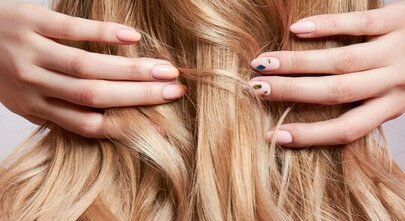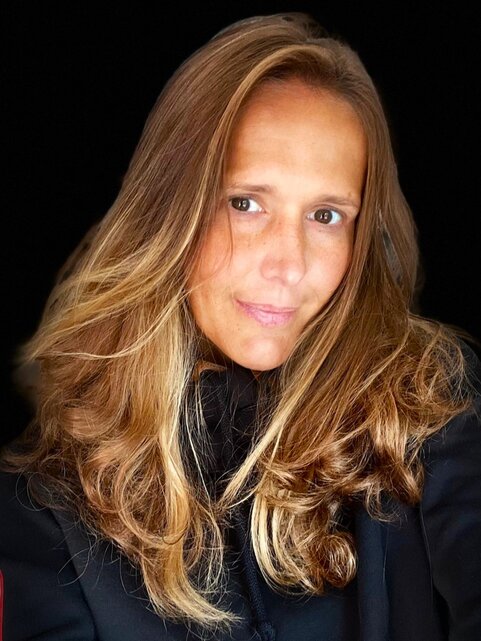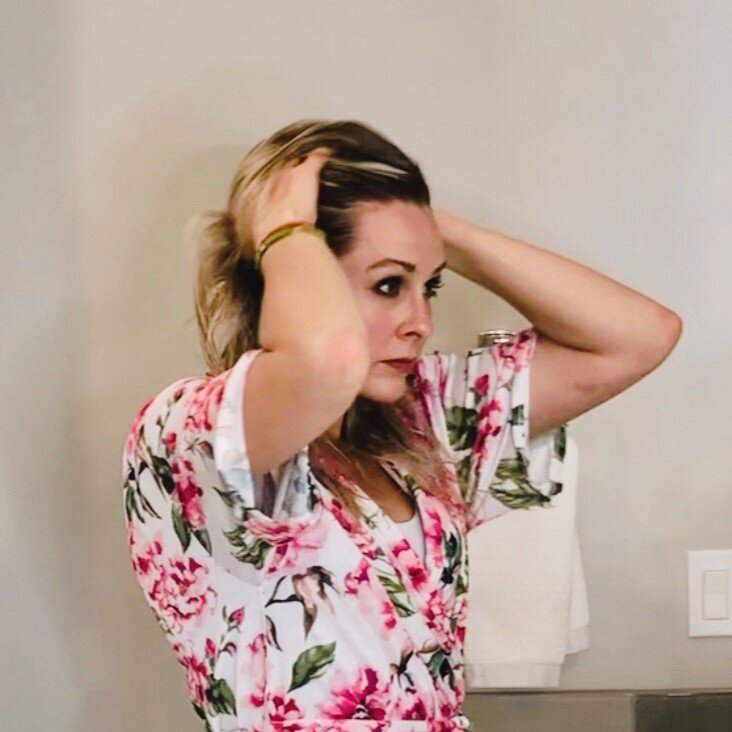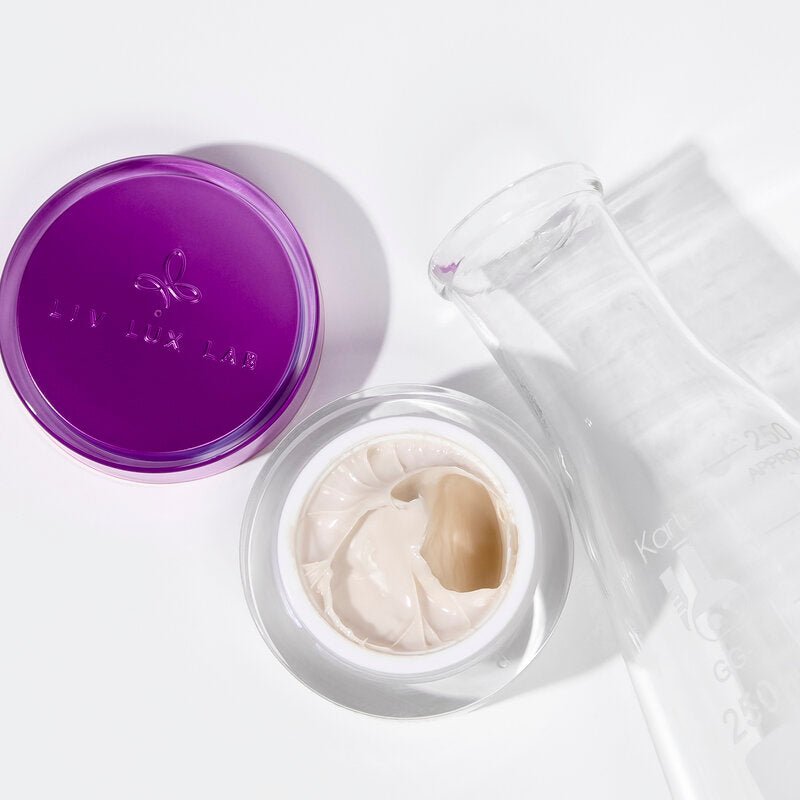
You might not think about how important your hair is until you face losing it. Hair loss has been affecting men and women’s self-esteem for centuries. Long thick hair during ancient times was a symbol of masculinity and vitality. Even nowadays, hair loss can symbolize aging or debility. Research in the Journal of Cosmetic Dermatology identified low self-esteem in many patients with androgenic alopecia (hair loss) but found that confidence could be restored once the hair was restored.
My struggle with hair loss was real. It lowered my self-esteem and was something I wanted to hide from the world. My hair loss made me feel like I wasn’t myself. For me, it symbolized that I was going through something that might make me weak. After rising above an abusive childhood, the perception of being a strong, self-made women were important parts of my identity. A human hair wig helped but I wanted to know how long it would take for my hair to grow back and what my hair would be like when it did grow back.
Hair grows at different rates depending on where on the body it's located. The average length of time it takes for hair to regrow depends on several factors, including the type of hair loss, the reason for hair loss and the location of hair loss, and whether there are any underlying medical problems that could affect the growth rate.
If you're like me, wondering how long it will take for your hair to grow back after hair loss, here's what you need to know.
How Fast Can Hair Grow?
Unlike other mammals, human hair growth and shedding is random. At any given time, a random number of hairs will be one of three stages of growth and shedding: anagen (active growth phase), catagen (transition phase) and telogen (resting before shedding phase). Average hair growth will vary by individual, but according to the American Hair Loss Association hair on the scalp can grow about 0.3 to 0.4 mm a day. Hair grows about half an inch per month or about 6 inches per year. The rate your hair grows and the phase your hair is in varies. A lot of other factors can impact how quickly your hair grows, including: genetics, illness, childbirth and other high stress times, cancer treatment, age, hormonal imbalances, medications, scalp infections, nutrition and your daily habits and hair styles. Over your lifetime, your hair growth rates will change with the physiology of your body. Hair regrowth is possible. Treatments can help stop or slow hair loss and some may even help regrow hair. The earlier treatment is started, the better the results. Without treatment, you will continue to lose hair. So, if you want to see results, it’s important to be patient while making lifestyle changes. Give your hair time to regrow. It’s typical to make a change and must wait at least three months before seeing any difference. Of course, this depends on several factors, such as the type of hair loss, whether there was any underlying medical condition, and what steps you’ve taken to overcome factors responsible for your hair loss. Here are some averages.
Shop: The best-selling thinning hair products
How Fast Does Hair Regrow After Waxing?
In this case, your hair loss was purposeful! Whether waxing, shaving, sugaring, there are so many ways to remove hair. When done correctly, waxing removes hair from the root and tends to last up to six weeks for a silky-smooth skin. However, this isn’t always the case. How quickly hair regrows depends on several factor like your personal hair growth cycle, your hormones, and medications you take, and how frequently you get waxed. And let’s be honest, it depends upon the area of the body you are waxing (have you heard of the five o’clock shadow?) Some areas like the lips, eyebrows or underarms will require waxing every two to four weeks, then all hair will likely have had the chance to be removed from the root. You’ll probably notice that your skin starts to stay hair-free longer and you can spread out the length of time between waxing appointments. Someone who gets waxed regularly will often cause the follicle to become damaged overtime. Hair can stop growing once the follicles are damaged. So, should you shave your head to make your hair grow back healthier? If it’s because you want to look as chic as your latest crop top, go ahead but if it’s because you think your hair will grow back thicker, we say, “NO! Don’t do it.” Shaving your head might help remove damaged hair that has been affected by heat styling or coloring. However, it will not affect the hair shaft or growth cycle. The quality of your hair can be affected emotionally through stress and from lack of the correct nutrients within the body and topically applied. Shaving [off your hair] won’t make it come back better or stronger.
Shop: Treatments that help repair hair damage
How Fast Does Hair Regrow Due to Genetics?
Androgenetic alopecia is one of the most common types of hair loss and it affects both men and women. This type of hair loss is also known as male pattern hair loss and female pattern hair loss. A widening center part line can be a sign of female pattern hair loss and a receding hair line, recession around the temples or a bald spot can be signs of male pattern hair loss. In both male and female pattern hair loss, androgenetic alopecia means that you’ve inherited genes that cause your hair follicles (what each hair grows out of) to shrink and eventually stop growing hair. Shrinking can begin as early as your teens, but it usually starts later in life. While there is no way to cure androgenetic alopecia, you can slow the rate of hair loss and encourage regrowth, but this will depend upon the topical products and nutritional changes you make.
How Fast Does Hair Regrow Due to Stress?
It’s normal to shed between 50 to 100 hairs a day, but have you ever experienced more hair shedding a few months after going through a significantly stressful time in your life? The medical term for excessive shedding is called telogen effluvium. Eighty-five to 90% of hair is typically in the anagen phase of active growth. Ten to 15% of follicles are in the telogen or resting phase. When you go through something very stressful, there is not only a major shift in your life but a major shift in which phase your hairs are in. An abnormal number or disproportionate number of hairs shift into the telogen phase and about three months later, you notice more hair shedding. This sudden shift can lead to several reasons for stress-related hair loss, including hair loss due to weight loss, hair loss due to childbirth, hair loss due to covid, illness, surgery or new medication, or hair loss due to a loss of a loved one, divorce or loss of a job. Most people will notice excessive hair shedding for a few months after a stressful event. This shedding typically peaks about four months after the stressful experience, such as in childbirth. Luckily, the shedding is normal and temporary. As your body adjusts, the excessive shedding stops. Within six to nine months, the hair tests to regain its normal growth and can return to its hair fullness. However, if the stressor stays with you, you can experience long-term excessive hair shedding. It’s important to reduce physical stressors as well as mental stressors in your life.
Read more: Ways you may be able to reduce scalp inflammation and follicular stress, topically.
How Fast Does Hair Regrow After Chemo?
Chemotherapy drugs are powerful medications that attack rapidly growing cancer cells. Unfortunately, these drugs also attack other rapidly growing cells in your body — including those in your hair roots. If you receive chemotherapy or have radiation treatment to your head or neck, you may lose all (or most of) your hair within a few weeks of starting treatment. Not only can you lose the hair on top of your head, but to my surprise (and it shouldn’t have been), it will cause hair loss all over your body. Although I had a wig to help hide my hair loss due to chemotherapy, I had nothing to help hide the fact that I also did not have any eyebrows or lashes (thinking in a glass-half-full kind of way, not having to shave was nice!) Everyone’s chemotherapy treatment plan will be different. Some chemotherapy drugs are more likely than others to cause hair loss, and different doses can cause anything from a mere thinning to complete baldness. Cold capping, which is a process of scalp hypothermia to cool the scalp with ice packs before, during and after each chemotherapy may also be prevent hair loss due to chemotherapy.
Hair usually begins falling out two to four weeks after you start treatment. It can fall out very quickly in clumps or gradually. You’ll likely notice accumulations of loose hair on your pillow, in your hairbrush and in your drain. Your scalp will begin to feel tender.
Fortunately, most of the time hair loss from chemotherapy is temporary. You can expect hair loss to continue throughout treatment and up to a few weeks after your last treatment. Hair regrowth typically begins three to six months after your treatment ends. When your hair regrows, it may temporarily be a different shade or texture. I experience a darker brown hair color as well as a curly texture when my hair regrew. I enjoyed applying Save Me From Age Acceleration Tip-to-Root Hair Reboot to my scalp (and my wig) during my chemotherapy treatment. My hair loss seemed delayed and did not occur until about 6 weeks into my treatment. My hair also seemed to grow back faster than other people receiving chemotherapy treatments at the same time as me. Now after my last treatment in February of 2020, my hair health seems to be significantly improved in strength and thickness than before I lost it.
How long does it take eyelashes and eyebrows to grow back after chemo?
Everyone's cancer treatment will be different; thus, hair fall during chemotherapy will be different. This is a temporary disruption to the hair growth cycle. Your eyebrows and lashes will normally start to re-grow once your chemotherapy treatment is complete. Like me, some people will start to notice hair regrowth during treatment, but this was during a transition from a more aggressive form of cancer treatment to a less taxing form. For most people, brows will grow back first, sparsely, followed by thin eyelashes within three to six months after chemotherapy is complete. Applying an eyebrow and eyelash conditioning product can help nourish the follicles so that hair grows back healthier once your treatments are complete. During chemotherapy treatment was the first time I also found myself reaching for a new beauty product, eyebrow gel. Brow gel helped create a look of fuller lashes which helped boost my confidence.
Can Hair Grow Back in Old Age?
With age, most people will notice some hair loss. Hair texture, color, thickness, and density are all impacted by age. As your body and hair follicles age, hair growth slows, hair fibers become thinner and at some point, hair follicles stop growing hair altogether, then drop out and never regenerate. Our hair loss progresses from thinning to naturally beginning to recede. There are natural pigment changes that occur in hair as you age as well. Pigment cells stop producing as much pigment and eventually your once thick, chestnut hair becomes thin, fine, and gray. Hormonal changes (like thyroid imbalances in Hashimoto’s disease) can come along with aging (like menopause) and impact hair growth. About 40% of women and 50% of men will experience some hair loss by age 50, but caught early, treatment helps some people regrow their hair and delay age-related hair loss.
Can Bad Nutrition Cause Hair Loss?
Nutrition can have a major impact on follicles. Your hair follicles depend on a variety of vitamins, minerals and protein to function properly. Nutritious foods are needed to build your hair shaft, cell by cell. Foods high in micronutrients (such as signaling amino acids, B vitamin like nicotinamide and flavonoids like quercetin) could prevent hair loss and improve hair and scalp health. Dieting, extreme changes to your diet, or an imbalanced diet can all directly impact the quality and density of hair. Nutritional deficiencies may impact both the quality of the hair structure (making the hair shaft more susceptible to damage) along with slowing the rate of growth. Regrowing lost hair due to nutrition deficiencies can take a few months or longer than a year.
What Are Underlying Conditions Leading to Hair Loss?
There are a wide variety of medical conditions that can bring on hair loss. Thyroid disorders and anemia can bring about hair loss. Others include autoimmune diseases (such as scalp psoriasis, alopecia areata, and lupus) and polycystic ovary syndrome (PCOS) are conditions that can contribute to or even cause hair loss. Graves’ and Hashimoto’s disease are two thyroid conditions that have been associated with hair loss, and this list is by no means exhaustive. It is always important to seek the advice of a medical professional to determine the underlying reasons for your hair loss.
9 Ways to Support Healthy Hair Growth
- Consult a doctor to understand the root cause of your hair loss.
- Manage stress-related hair loss with exercise, meditation, journaling and with a healthy diet.
- Avoid restrictive dieting that can decrease the nutrients needed for hair growth.
- Eat a nutritious diet that includes adequate proteins, antioxidant-rich vitamins and minerals. Be sure to reach for foods rich in biotin, vitamin C, vitamin D, vitamin E, zinc, iron and omega-3 and -6.
- Hold styling that involves high heat. This heat can damage the hair and cause hair breakage and also dehydrate the scalp. Be sure to use topical scalp protects that restore the scalp’s protective barrier and helps prevent moisture loss.
- Indulge in a scalp massage that can relieve stress while helping to stimulate blood vessels to the scalp.
- Try caffeine-infused hair products that topical use has been shown to give hair growth a boost. Luckily, all Save Me From hair products contain caffeine.
- Protect your hair while you sleep by using a silk or satin pillowcase that helps to prevent friction, tugging and tangling that can cause hair breakage while you sleep.
- Apply antioxidant-rich and bond-building hair products like Save Me From to your scalp and hair. Antioxidants to your scalp may significantly reduce hair loss and improve the health of your scalp while crosslinking amino acids are able to restore broken bonds for added hair strength.
Take care of the hair you have while paying special attention to your scalp. It’s possible to create a nutrient-dense environment with topical hair treatments that can reduce hair fall, hair shedding and hair loss while encouraging healthy hair growth. When the scalp is properly cared for, hair emerges stronger from the start with an improved ability to resist damage and look its healthiest.
Save Me From Age Acceleration and Chemical Conflict are packed with beneficial phytoactives that support scalp health and healthier hair with hair products that are free of harsh sulfates, silicones, parabens and artificial dyes.

Burg D, Yamamoto M, Namekata M, Haklani J, Koike K, Halasz M. Promotion of anagen, increased hair density and reduction of hair fall in a clinical setting following identification of FGF5-inhibiting compounds via a novel 2-stage process. Clin Cosmet Investig Dermatol. 2017;10:71-85. doi:10.2147/CCID.S123401
Cleveland Clinic. 5 ways to get overplucked eyebrows to grow back. Updated January 23, 2020.
Grymowicz M, Rudnicka E, Podfigurna A, et al. Hormonal effects on hair follicles. Int J Mol Sci. 2020;21(15):5342. doi:10.3390/ijms21155342





